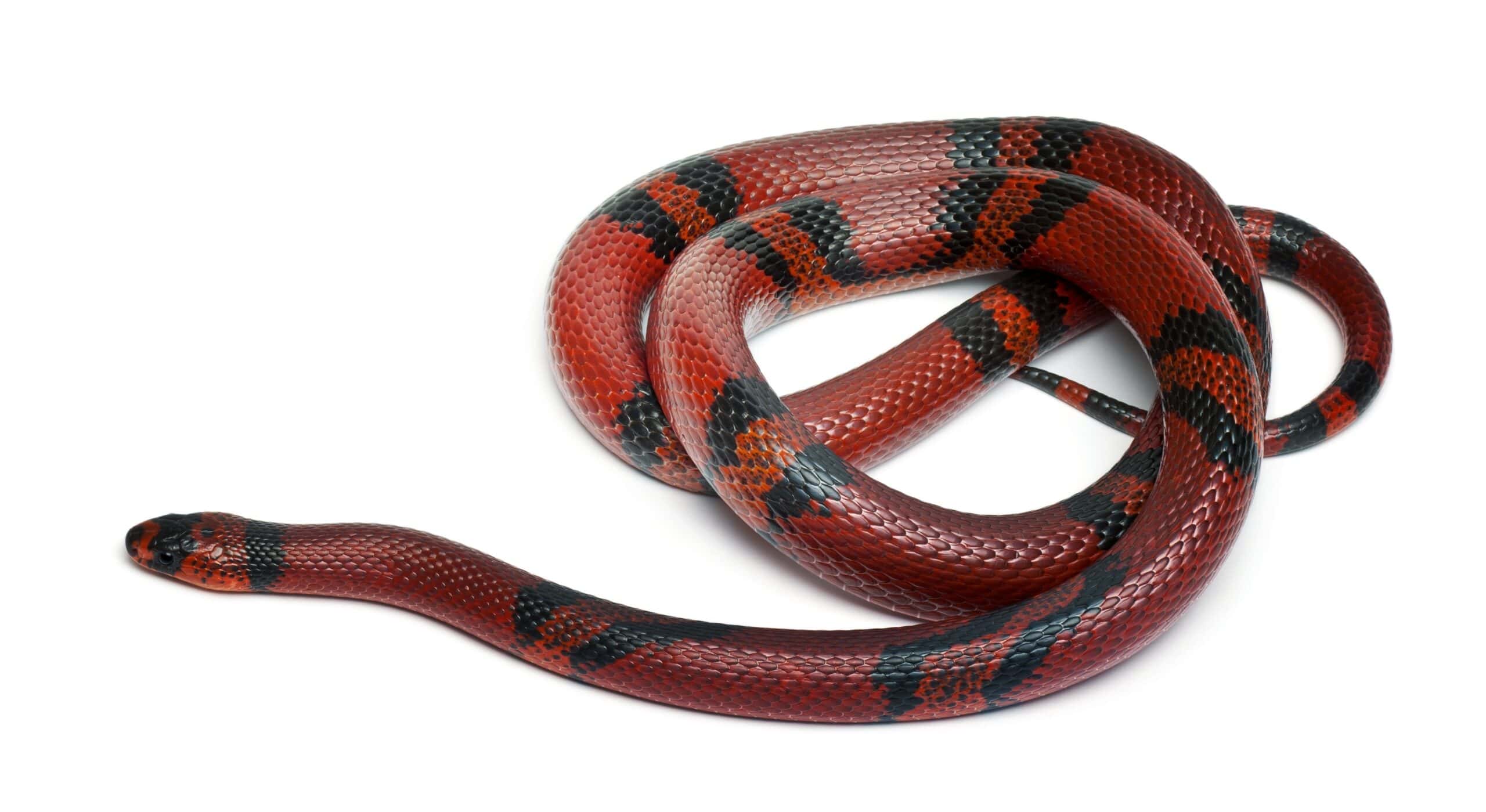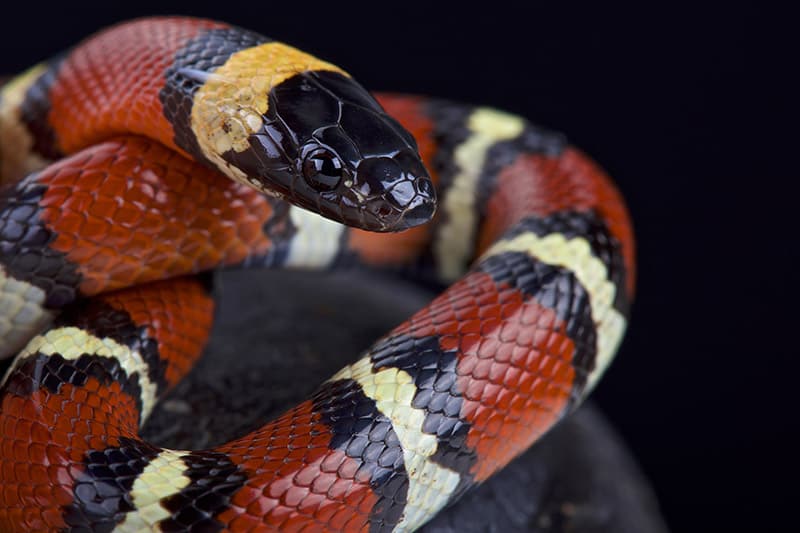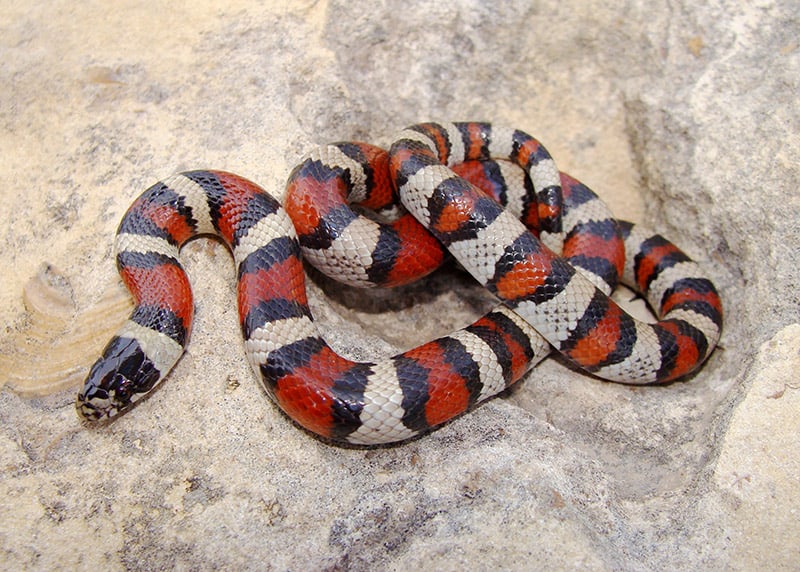The Milksnake gets it name from an old belief that it takes milk from the udders of cows!
The Milksnake or Tricolored Kingsnake is a very good-looking snake that is easy to feed and very hardy. It makes a favorite pet for both the beginner and the experienced herpetologist. They are very gentle, docile, and handleable.
- For more information on keeping Snakes see: Guide to a Happy, Healthy Herptile
Scientific Classification
| Kingdom: | Animalia |
| Phylum: | Chordata |
| Class: | Reptilia |
| Order: | Squamata |
| Family: | Colubridae |
| Genus: | Lampropeltis |
| Species: | triangulum annulata |
Distribution
Milksnakes are found in North America. Specifically they are found in the southern part of the United States.
Description
The Milksnake or Tricolored Kingsnake is a beautifully colored snake marked in broad bands of yellow and red that are separated by narrower black bands. With its smooth scales and fairly slender body it is not only lovely to look at, but a pleasure to hold. The milksnake can reach up to six feet long in the wild. In captivity they generally only reach three to four feet.

Feeding
They are a constrictor and in the wild their diet consists of lizards and snakes. In captivity they will also eat rodents and birds. Feed once or twice a week, depending on the size of the food and the size of the snake. As you get to know your snake, you’ll learn what its feeding needs are. Fresh water in a shallow dish should always be available.
Environment
The milksnake, like the kingsnake is a carnivore and will eat other snakes. They must be housed separately except when they are being bred.
Milksnakes should be housed in a woodland or desert type terrarium. See the different terrarium set-ups described under Basic Reptile and Amphibian Care for more information. The terrarium needs to be a 20 gallon size or larger. The milksnake will need a hiding place, a small water dish, and moderate humidity.
Temperature and Lighting requirements
They do well at 72° to 88° F in the daytime, and 67° to 72° Ft night. Full spectrum lighting is important for your milksnakes well being and its long-term maintenance. You can use a substrate heating device for basic heating. For additional heat, you can add a full spectrum incandescent daytime bulb and a blacklight bulb or red incandescent bulb for nighttime heating. Be sure you use a thermometer so you don’t let the terrarium become overheated!
- For more detailed information see the Basic Reptile and Amphibian Care: Housing.

Breeding/Reproduction
These snakes, if not babies, need to be probe sexed for positive sex identification. They are egg layers, and will lay up to 24 eggs that hatch in about 10 weeks. The hatchlings are only about six to seven inches long, with and average adult reaching 24″ to 32″.
Availability
The Milksnake or Tricolored Kingsnake, and the many color variations of these snakes, are generally readily available as pets due successful captive breeding.
Featured Image Credit: Matt Jeppson, Shutterstock
